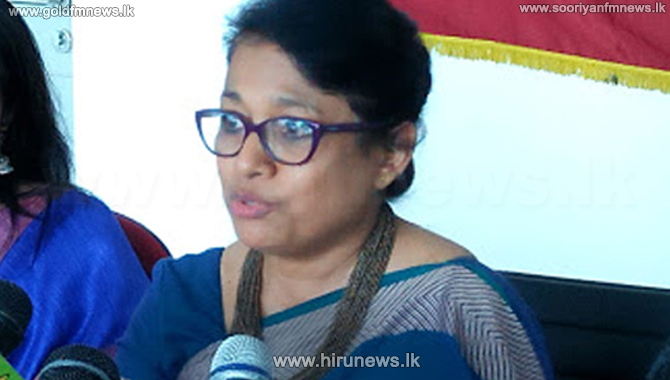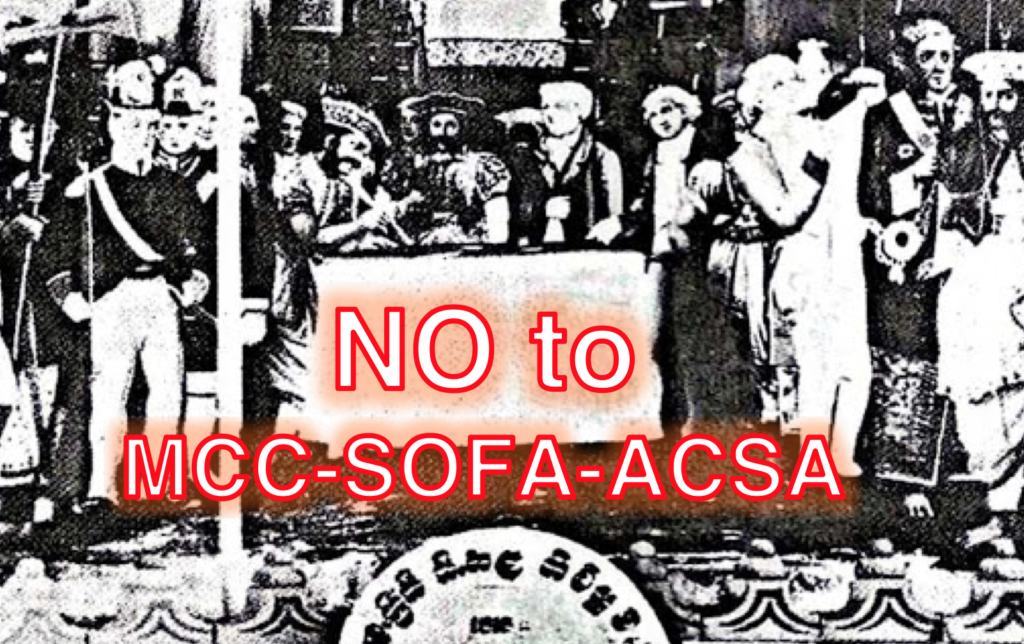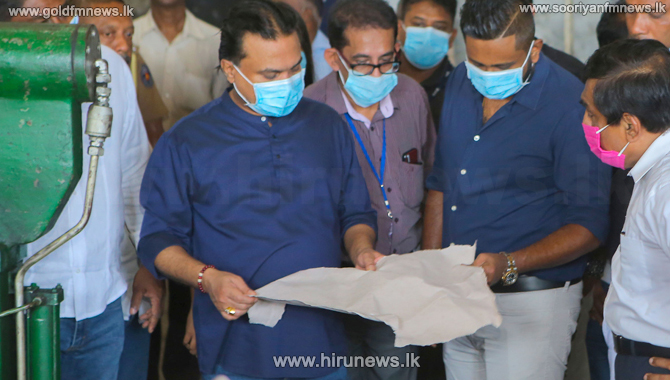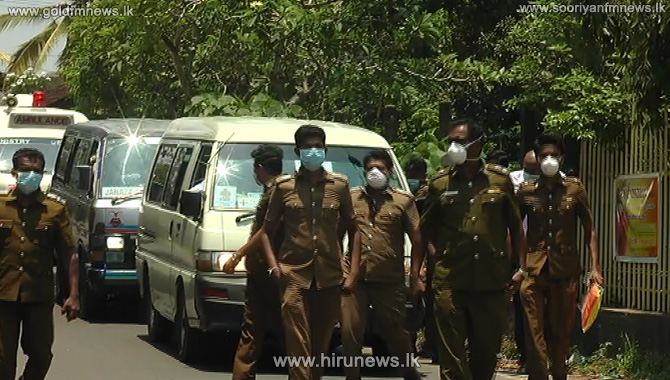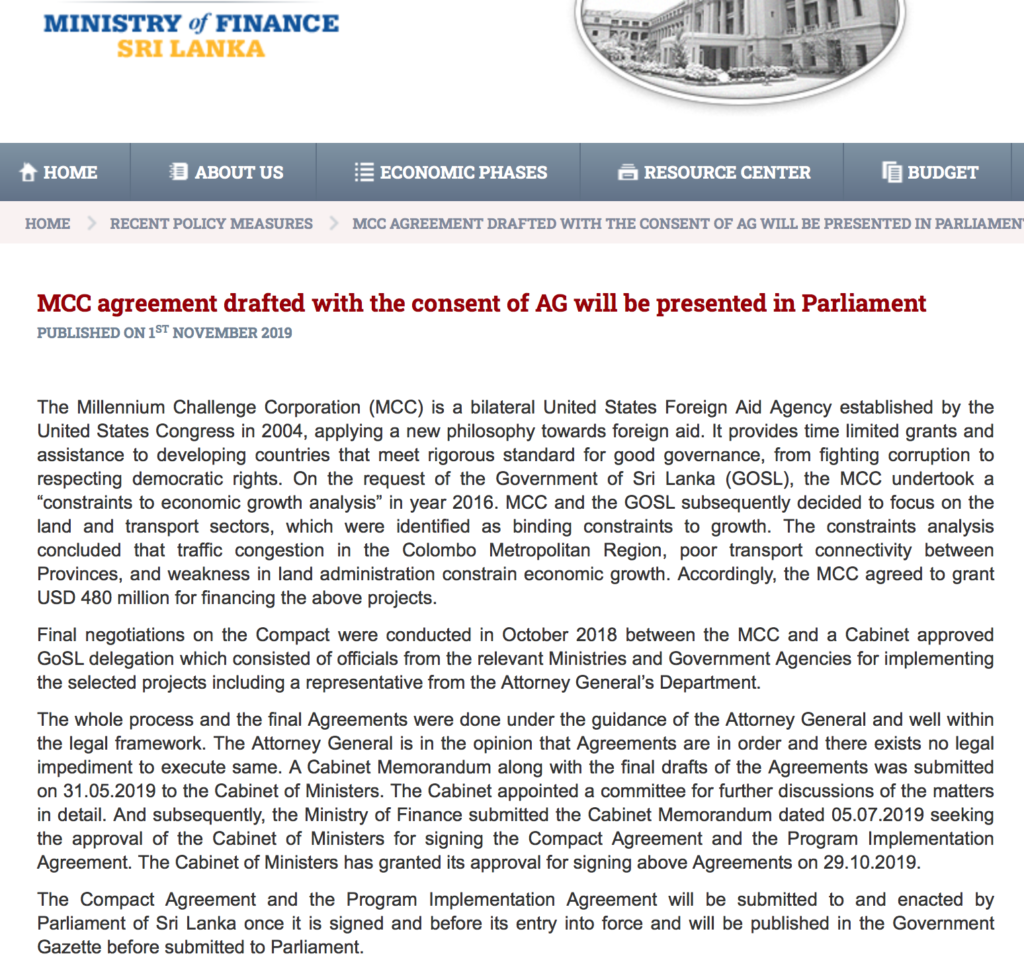By Garvin Karunaratne, former G.A. Matara
Let us try to get away from
the rhetoric- the art of effective or persuasive speaking, often with an
implication of insincerity or exaggeration”(Oxford Dictionary). Promises are
many but it is quite evident that most promises cannot be easily fulfilled.
President Gotabhaya’s promises are few but he has vowed to implement them. So
far since becoming the President and from 2005 to 2015 he has been able to keep
to his word.
The leaders, who stand a
chance of getting elected are well known
and more, in some capacity they have ruled our country for years, and perhaps
more than what they speak, historical facts telling what they really did, when
they were ruling as President, Prime Minister or Minister will reveal what we
can expect of them.
Foreign Meddling
It has become normal for foreign Superpowers to take action against countries that were
following Socialist policies. The following excerpt from Professor Jeffery
Sachs tells it all:
Notorious act of US
unilaterlism include the CIA led overthrow of several governments-Iran, Guyana,
Guatamala, South Vietnam and Chile, the
assassination of countless foreign officials and several disastrous unilateral acts of war on
Central America, Vietnam, Cambodia, Laos and Iraq. The US has thrown out
elections through secret CIA financing,
put foreign leaders on CIA payroles and supported violent leaders who then came back to haunt the US in a notorious boomerang or blowback
effect(including Sadaam Hussein and Osama Bin Laden), both once on CIA
payroles”(Commonwealth Economics for a Crowded Planet, Allen Lane, 2008)
Sri Lanka has had its share of
foreign influence in elections. It is well known that the defeat of President
Mahinda Rajapaksa in 2015 was hatched at Harvard University in the USA.
It is up to the voter to decide which
candidates are acting against the sovereignty of the country.
Important infringements on Sri
Lanka’s Sovereignty.
The country survived the Fidel Castro type of one day attempt by
the JVP to take over the country in April 1971, when it was found that the
North Korean Embassy had a hand in the uprising and the Embassy was promptly
shut down and the officials deported. Once the uprising was quelled and the JVP
cadres decamped to the Sinharaja Hills, a European Ambassadorial jeep came
several times and went into the jungles to meet them.
With the two uprisings in 1971
and 1987-89, with the functioning of kangaroo courts, the rich
in the rural habitat– the rice millers, estate owners etc. who had made the rural areas their homes,
decamped to the cities and were so frightened that they never returned to their rural habitat.
It is they and their children when grown
up that had invested in their rural
areas. They sent their children overseas for study, never to return to the
Motherland. The rural areas became dead.
Major
historical happenings during Periods when the chief contenders at this election
ruled or when they were associated with the rulers
Let us take the periods when
the chief contenders ruled, when their political parties held sway and assess
the major events of how the country was handled and the major changes made.
This will easily reflect what we can expect of the present day contenders.
President
Jayawardena 1977-
When President Jayawardena
took over at the tail end of 1977, a major change was to liberalize the
economy. Though President Jayawardena
did whatever the IMF dictated, by 1986, the economy ended in shambles.
From 1948, when we achieved
independence the economy was managed
with the foreign exchange we earned. There were import controls to
ensure that essential consumer goods were imported and allocations of foreign
exchange were made for the import of luxury items, according to available
foreign exchange. The IMF advised
President Jayawardena to open up imports- not to have import controls and also
to liberalize the use of foreign exchange- allow foreign exchange to be used
freely for foreign travel, for educational expenses abroad. When the country
had no foreign exchange to meet such increased commitments, the IMF advice was
to privatize paying State assets and if that was insufficient, to raise loans.
It is this process followed from the end of 1977 that led to the ballooning of
the foreign debt to some $ 60 billion today.
Though Ronnie de Mel, the Minister of Finance in his Budget Speech of
1978 hailed this : We cannot go round the world begging for aid like
international beggars forever. We must
get out of this vicious circle of no growth, stagnation and mounting internal
and external debt”(Budget Speech: 1978), the result was the opposite. Using
money that one did not possess and raising loans only worked to make us more
indebted. In eight years, by 1986 the economy was in shambles.
In the words of the World Bank:
By 1986…the deterioration of
the economy had become evident. The growth rate of the GDP slowed to under 4 %, unemployment rose to about 17% and gross official reserves declined
to less than 2 months’ imports”(World Bank:Trends in Developing
Economies,1990:496)
While the foreign debt of Sri
Lanka was negligible in 1977, by 1986, it had ballooned to $ 4,063 million and it increased to $ 5100
million by 1989. Comparatively when Jayawardena commenced following the IMF
prescriptions of the SAP at the end of 1977 Sri Lanka had a negligible foreign
debt- only $ 750 million. The country slumped to become an indebted nation. In
other words the IMF had through its advice made Sri Lanka a sovereign nation
that had a negligible foreign debt to become a heavilyindebted country with a
foreign debt of $ 60 billion today. Currently Sri Lanka has to meet a payment
of $ 4 billion in 2020 purely to service the loans it owes. This is the legacy
that President Jayawardena of the UNP has left for Sri Lanka- a situation of
indebtedness from which Sri Lanka can never redeem itself.
Even since President
Jayawardena followed the prescriptions of the IMF, though the rich in the
country benefitted from relaxed foreign exchange controls- could go on foreign
holidays, send off their offspring to study abroad and enjoy imported goods,
the country slumped into foreign debt and the masses- the vast majority of the
people could not afford even to buy consumer goods as the prices had escalated.
This caused poverty and inflation. The Structural Adjustment Programme(SAP) of
the IMF contain an economic system that
would lead the countries to become indebted in the process of servicing the
loans as the loans were non developmental.”(From Karunaratne: How the IMF
Sabotaged Third World Development(Kindle/Godages: 2017)
Since gaining independence in
1948 Sri Lanka had developed and implemented an intricate and effective development
infrastructure to enable development. One of the conditions laid down in
following the neoliberal policies imposed by he IMF was that the Government had
to accept the Private Sector as the Engine of Growth and in keeping with that
proviso, the Public Sector should not have any development incentives. This
meant that the development
infrastructure had to be abolished. In order to help agricultural production, the
Government implemented a Guaranteed Price Scheme for paddy and other
cereals in short supply. The aim was to enable cultivators earn a premium price
for their production. This Scheme was abolished and along with it the godowns
and Rice Mills which were very valuable-
were sold for a song or left to rot as scrap. This was a great loss. The
producers were thereby denied a
reasonable price for their produce. It
is the authors contention that this was purposely imposed on Third World
countries to destroy their agriculture development so that they would have to depend on wheat
from the USA and Europe.
Another Scheme was the Vegetable
and Fruit Purchasing Scheme, run by the Marketing Department, which provided a
high price for local vegetables and fruits. The Marketing Department also had a
Cannery, to make Jam, Juice and Sauces
out of local fruit. The IMF insisted that the Cannery should be privatized
and the Vegetable and Fruit Purchasing Scheme should be scrapped. This was
done and the Marketing Department was
abolished. While this enabled imports of jam and Juice from Developed Countries
like the USA it did cause poverty in that the producers could not sell their
produce.
Sri Lanka had a very
successfully run Public Transport Scheme- a fully equipped coach making unit at Werahera.
The country was producing its own coaches on imported chassis. This fully
equipped unit at Werahera was closed down and the valuable state of the art
machinery sold for a song, Thereafter Sri Lanka had to import all its coaches.
The Railways had developed machinery to make all coaches at Ratmalana, This
was also closed down and thousands of carpenters lost their jobs. Thereafter
rail carriages were imported.
The scrapping of this
development infrastructure was agreed and done by President Jayawardena of the UNP.
Education Sri Lanka had concentrated on
having a highly developed school system, where children were taught free. The
UNP Government introduced Private International Paying Schools which taught the
children of the rich for foreign exams
and this ruptured the comprehensive
system of education that had been highly developed with Central Schools. The UNP is totally
responsile for ruining the education system and actually creating a youth that shun Sri Lankan culture and values. This was a major
retrograde creation of the UNP. Ranil
Wickremasinghe of the UNP happened to be the Minister for Education that ruined
education in Sri Lanka
Another major incident during
President Jayawardena’s period is how he caved in to Prime Minister Rajiv
Gandhi of India and agreed to enact the 13 th Amendment to the
Constitution of Sri Lanka. The Constitution of a country is a sacred document
and any change has a bearing on the sovereignty of the country and President Jayawardena caving into the
Prime Minister of India to change the Constitution marks a great failure of
President Jayawardena. The 13 th Amendment with Provincial Councils and
decentralizing subjects was not suitable for a small country like Sri Lanka.
The Provincial Council system is very costly and it is an unnecessary
expenditure. Decntralization of important subjects like agriculture had a
detrimental effect.
The manner in which the 13 th
Amendment was passed in Parliament is
also of great importance. It indicates the extent to which President
Jayawardena and the UNP disregarded the interests of the country and compelled the elected representatives- the Members of
Parliament to be forced, like at gun point- by incarcerating them in a hotel,
keeping them under lock and key and marching them to Parliament to vote as he
pleased. The President also held letters
of resignation signed by all MPs (except for Ronnie de Mel, the Minister of
Finance), which he held as ransom to use in case any MP refused to carry out
his instructions. This undemocratic method of ruling by President Jayawardena
remains a major scar on the UNP.. Up to date in implementing the 13 th
Amendment Police and Land Powers have not been decentralized.
The Samagi Bala Vegaya where
Sajith Premadasa is the main candidate
has already declared that the 13 th
Amendment in full- with police and land powers will be implemented. Sri Lanka
will be without any doubt balkanized into provincial regimes and
that will be the end of Sri Lanka.
Prresident
Premadasa 1989-1993
President Premadasas when
he was president helped the LTTE, the
Tamil rebels who wanted to carve out the north and east of Sri Lanka as a
separate state. President Premadasa even provided weapons to the LTTE, which
they ultimately used against the Sri Lankan Army.
President Premadasa in Peace Talks with the LTTE agreed to hand over
the Eastern Province to the LTTE and the police personnel in all the police
stations in the Eastern Province were instructed to surrender to the LTTE
cadres in the area. This was done and the LTTE instead of providing them safe
passage to Colombo as agreed, marched
600 police personnel to the jungle where
they were murdered. This action of
President Premadasa is a crime that can never be forgiven. ..
It was during th reign of
President Premadasa that there was a reign of terror and many people went
missing, A well known lyric writer, poet Richard de Zoysa is supposed to have been abducted and killed
by the armed forces. In the days of
President Premadasa there was compulsory acquistion of land in Colombo,
without any rhyme or reason. One land owner
could not even find a lawyer to
file a petition in the Supreme Court to stay the acquisition of her
land.”(Karunaratne: How the IMF Ruined Sri Lanka: 2006: Godages)
Sajith Premadasa who leads the Samagi
BalaVegaya, evidently a splinter group
of the UNP at this General Election, only quotes the good deeds like rural
development which was done by President Premadasa
Chandrika
Kumaranatunge
Kumaranatunge during her
period tried to defeat the LTTE but miserably failed. It was during her time
that the LTTE attacked the Colombo Airport destroying a number of aircraft.
President Mahinda Rajapaksa
2005-2015
The major achievement during
this period was the defeat of the LTTE.
The LTTE had a reign of terror
for 30 years, developed the idea of having child soldiers and suicide bombing
and had a reign of terror in the entire island
President Rajapakda vowed to
defeat the LTTE and commenced military action. The LTTE ruled the North of the
island for close on three decades ,but was militarily defeated by President
Rajapaksa in 2009. The cat was out of the bag at the last moment when the
Superpowers, including France, the UK and the USA, came forward and insisted that Prabhakaran, the leader of the LTTE should be spared. President Rajapaksa did not give in and
finally the LTTE was routed and the leader Prabhakaran killed in 2009.
Gotabhaya Rajapaksa, the
brother of President Mahinda Rajapaksa who had once served in the Sri lanka
Army as a Lietunenant Colonel was the Defence Secretary and played a key role in the defeat of the
LTTE. This defeating the LTTE shows
their mettle.
The major achievement of
President Mahinda Rajapaksa was the defeat of the LTTE. Earlier as Minister for
Highways under the reign of Chandrika Kumaranatunge, he saw to it that Sri
Lanka had developed a network of well
built roads..
President Gotabhaya
Rajpaksa played a major role in the
development of the country. He
singlehandedly developed the City of Colombo, equipped it with walkways, and various amenities. Under him Colombo could even aspire to have
been the best city in South Asia.
The Helping Hambantota
cheque incident is held against
Prime Minister Mahinda Rajapaksa. During the Tsunami Invasion in 2004, it was
brought to his notice that a cheque has ben received as a donation and he ordered that it be
banked. It was banked and forgotten. Later on it was raised as a charge of
misappropriation and the cheque was traced lying unused in a bank account. This
incident has to be taken in context when some 30,000 citizens had perished when
the Tsunami struck and in the absence of the President, Mahinda Rajapaksa in
his capacity as the PrimeMinister, was
running everywhere in a helicopter issuing instructions. There was no time to
record events and keep notes. It was a time when the earth was turning on its
head. Take the matter out of context and one can say that he should have
ensured that the cheque was credited properly.
The author too has had an inkiling of serious days when it was a matter of life or death, when there
was an action sequence every minute and there was no time to write down and
check whether orders had been carries
out. This cheque incident must be taken in the context of handling an
unprecedented national calamity.
Prime Minister Mahiunda
Rajapaksa has faced many problems. He has never run away like President
Chandrika when the Kolonnawa oil tanks were in flames- an attack by the LTTE.
She was emplaning at the airport when that incident happened. She continued
leaving the island, leaving the Presidential Secretariat to be manned by
his Secretary. The one time Mahinda Rajapaksa
ran away was in 2015, when he realized that the voters had rejected him.
Then he left Temple Trees abruptly and
stopped only at Medamulana. That indicates his adherence to the democratic process
of governance and elevates his standing in democratic politics.
Maitripala
Sirisena cum Ranil Wickremasinghe
2015-2019
The Yahapalane Government of
2015 was actually a Government that was established by foreign forces. The USA played a key role. It was the sequel
to President Rajapaksa refusing to follow the dictate of all the
Superpowers not to harm and spare
Prabhakaran the leader of the LTTE. True to his form President Rajapaksa
refused to accede to their request and the LTTE was totally defeated with the
leader too being killed in 2009.
Though Maitripala Sirisena was
implanted as the president, the Yahapalana Government was ably run by Ranil
Wickremasinghe of the UNP who was the Prime Minister.
Sacrificing the sovereigny of
Sri Lanka was clearly evident in the
Yahapalana Government co sigining and agreeing to a UK sponsored
submission to the Geneva Council of Human Rights. By this the Government of Sri Lanka agreed to
many provisions put forward by the Superpowers including foreign judges
participating in Sri Lanka on investigations against the Sri Lankan Army
defeating the Liberation Tigers.
The Period 2015-2019 was
marked with an increased foreign debt. The Central Government debt, as a share
of the GDP had increased to 102.5% when the UNP ended its term in 2005. President Mahinda Rajapaksa handled the
economy prudently and reduced the debt to 72.3% by 2015. However from 2015 to 2019, under the Yahapalana
Government the debt increased to 86.8%.
This speaks of mismanagement during UNP rule and prudent management
during President Rajapaksa’s rule.
Earlier in 2001-2004 Ranil
Wickremasinghe as the Prime Minister, sided the Liberation Tigers and had to be
removed by the President Kumaranatunge in 2004.
The MCCCompact. The United States
pressurized the Government to sign an agreement with the MCC(Millennium
Challenge Corporation) for allowing the USA to have a stake in Sri Lanka in
return for a grant of $ 480 million. This was supposed to be spent on a
transportation and a land project. An agreement was to be signed but due to protests the Prime Minister Ranil
Wickremasinghe said that the agreement will be signed after the UNP nominee
Sajit Premadasa wins at the presidential election. Under the transport project
some roads and traffic lights etc were to be developed , to easen traffic
congestion while under the land project, all crown land including land on colonization schemes, alienated under
restricted conditions, were to be given
full saleable rights. These lands were alienated on specific conditions meant
to ensure that this land will remain within the peasantry. This was decided
during the State Council days. The intention of the MCC proposals was evidently
to enable multinationals to get control over land in Sri Lanka.
This MCC agreement divides Sri
Lanka into three segments with a corridor from Trincomalee to Colombo,
including both ports. This major corridor comprised 28% of the land mass of Sri
Lanka. This section was to be given to the USA for a period of 200 years.
Comparatively the British ruled Sri Lanka only for a period of 133 years- 1815 to 1948. This section would come
under US jurisdiction. In short the land would be US territory coming under US
laws..
.
A map distributed by MCC
team Leader Steve Dobrilovic showed this
200 mile corridor between Colombo and Trincomalee to be awarded to the
US authorities coming under US jurisdiction where an electric rail track was to be built effectively dividing Sri
Lanka into a southern and northern region. It was a plan for Sri Lanka to be
handed over to the US Government and for the North to get into the hands of the
Ltte rebels who today are planning subversion in secret.
These negotiations took place
in absolute secrecy between representatives of the Yahapalana Government and
the MCC team from the USA housed within the Temple Trees Complex used by Prime
Minister Ranil Wickremasinghe.”(Lanka Web10/1/2019) This was highly irregular.
The grant was to be given to
be managed by a MCC Company under US Government procurement rules and
regulations”(Lanka Web: 11/01/2020)
It is important to note that
similar agreements to divide Sri Lanka were also proposed earlier by the Asian
Development Bank an the Export Import
Bank of Korea, but these were all based on loans. In the case of the MCC it was
a grant. However the grant was to be given to a company- which will work with theMillennium Challenge
Corporation.
It is to be noted that the
valuable phosphate deposits of Eppawela as well as the illmenite deposits at
Pulumuddai were within this corridor to be handed over to the USA.
It is correct to state that
this MCC Compact will impringe on the sovereignty of Sri Lanka. Once granted
this area will come under US, managed under their laws.
The UNP Yahapalana Government
of 2015-2019 was at first to get Minister Mangala Samaraweera to sign this MCC
Compact Agreement but this was put off
due to protests.
The aim of the MCC as the
alleviation of poverty is only a façade to get this agreement signed. Instead
the MCC Compact will enable foreign
multiinationals to gain control over the land.
It is the opinion of Neville
Laduwahetty that in the case of the MCC
Compact, the issue is that an Act that affects an asset that is an integral
part of the sovereignty of all the people and held in trust by
elected representatives of governments
should not be passed by a simple majority but ONLy by a special majority of two third
approval of Parliament and approval by the people at a Referendum.(The Island:
16/7/2019)
The UNP insisted that they
would sign the MCC Pact and when they found it impossible to sign, then declared that they would sign the
agreement on the day after their candidate Sajith Premadasa is victorious at
the presidential election That did not happen and now they shout out that the
Government of President Gotabhaya will sign it. On the other hand President
Gotabhaya has subjected the MCC Pact to a Report by experts led by Professor
Gunaruwan and the entire Report has been released to the public. The Report
states in definite terms that the MCC Pact infringes on the sovereignty of Sri
Lanka and spokesmen of the Government have stated that it will not be signed.
The President Gotabhaya method is upright
with nothing to hide while when it was handled in 2015-2019, by Prime
Minister Wickremasinghe everything was swept under the carpet. It was
definitely wrong to house a US Company the Millennium Chaallenge Corporation
drafting and scheming to get the Pact signed housed in the hallowed sacred
premises of Temple Trees.
Sajith Premadasa was a leading minister of the Yahapalana
Government of 1995 to 2020 and has to take responsibility for Government
misdeeds as he was a senior minister in the Cabinet.
It is sad that the US Embassy
resorted to many tactics to get the MCC Pact signed. Though the MCC Pact is
couched in terms of poverty alleviation- it amounts to a sweetened pill to drag
Sri Lanka more into the orbit of the US hedgemony in South Asia.
My frank opinion is that the
MCC Compact is an attempt to carve out a separate State for the LTTE, this time
in a sheep’s clothing. It is a task that was earlier attempted by the ADB and
the Eximm Bank of Korea. Then the offer was a loan. In the MCC Compact it was a
grant.
Our Sri Lanka has the
ability to develop our own resources as
proved just at this moment by the restoration of the Valachenai Paper factory
accomplished in a few months during President Gotabhaya’s regime. It is
reported that Valachenai Paper will be offered for sale within the next month.
This is an indication of the economic development that can be expected under
President Gotabhaya. The manner in which President Gotabhaya handled the Corona virus epidemic , by
deploying the army to check and provide quarantine has enabled Sri Lanka to
become the foremost country that handled the Coronavirus epidemic in an able
manner. This alone speaks volumes about President Gotabhaya’s ability to tackle
a calamity. In his able hands Sri Lanka will inevitably prosper.
The historical facts detailed above enable the voter who may
have forgotten our history, to act as a patriot and save Sri Lanka at the
General Election 2020..
Garvin Karunaratne
Former GA, Matara,
2/7/2020
Author of How the IMF Ruined Sri Lanka and Alternative Programmes of Success(Godages :2006)
How the IMF Sabotaged Thord World Development(Kindle/Godages: 201
